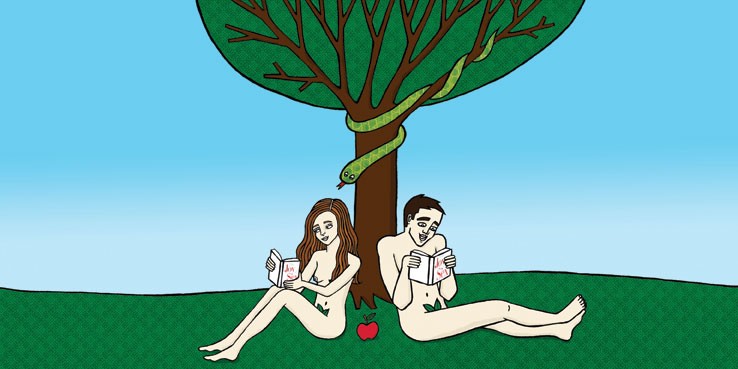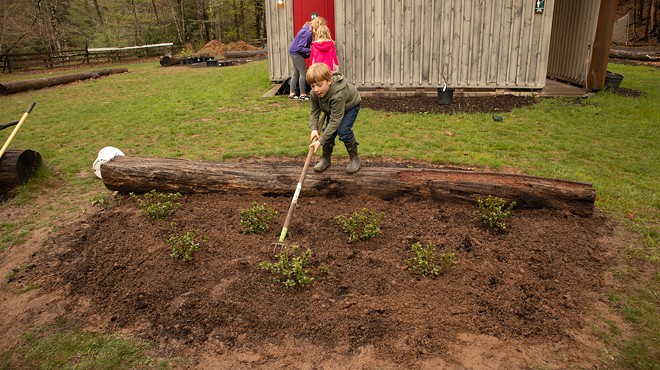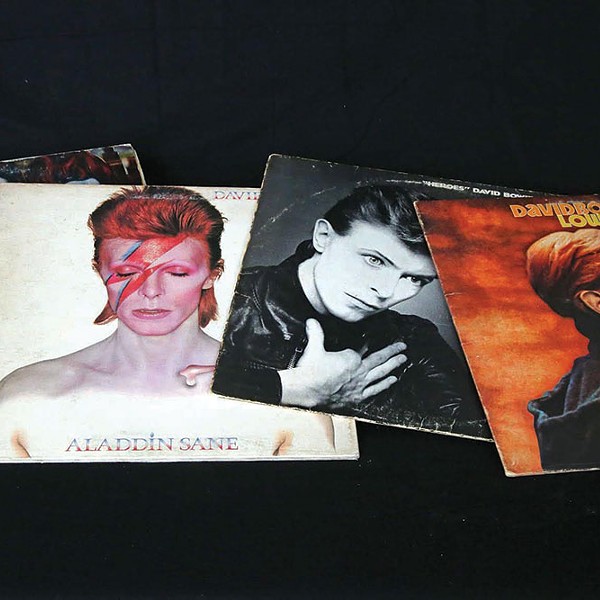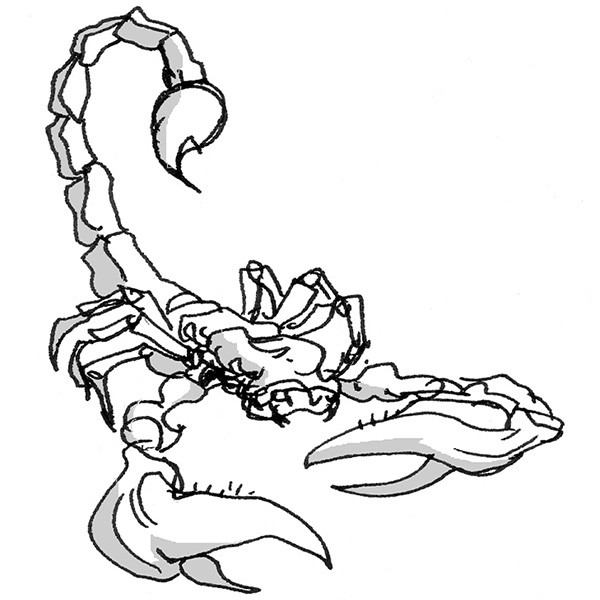What is Good Sex?
Two Experts Explore the Pathways—and Roadblocks—to Sexual Satisfaction
[]
A juicy three-way was what I had in mind—conversation, that is—when I heard about the diverging perspectives of two Hudson Valley sex experts. Erotic educator Sheri Winston is founder and director of The Center for the Intimate Arts in Kingston and the author of Women’s Anatomy of Arousal: Secret Maps to Buried Pleasure. Sex therapist and professor Marian Dunn sees clients in Garrison as well as in New York City and Brooklyn, where she serves as director of the Center for Human Sexuality at SUNY Downstate Medical School. Here they agree and disagree on how we can realize our best sexual selves.
Before we jump into anything between the sheets, let’s take a look at desire itself. How does it work? What if low libido is a problem?
Marian Dunn: First of all, spontaneous desire may not be so common in women after a relationship has begun. Many women instead have responsive desire. Affection and cuddling might fill their needs, or it might make them feel aroused. Once they feel aroused they’ll start to feel the desire for more arousal. That leads to good things happening for a sense of sexual satisfaction, and the circle of intimacy and closeness is completed. This is the circle theory of Dr. Rosemary Basson, from Canada, and it makes sense to a lot of women. If women are waiting to feel desire, they may be waiting a long time. In fact, the less affection and sex that a woman is having, the less she may be wanting to have. If women don’t have sex, their bodies go to sleep. If men don’t have sex, there might be a craving. Maintenance sex is a good thing because it keeps the juices flowing. You don’t have the problem of “we haven’t had sex in six weeks,” when every sexual occasion becomes full of pressure and demand and has to be perfect.
Sheri Winston: Wanting to want it—that’s the first step. Not feeling like you have to want it also is important. Our culture says we should always want to have a lot of sex. There are times in your life when you don’t, and that’s normal. After you have babies, when you’re ill, or if you’re really consumed by your work. Sometimes sexual energy is going into something else. We also have this idea that our sexuality is supposed to be the same throughout our lives, always robust, but it isn’t. For men it’s a life arc; it’s different in their 20s than in their 50s. For women, we have our menstrual cycle, so we’re always in flux. Yet at any time, we can make the conscious choice to cultivate our sexual energy, and notice when it requires more cultivation.
How do we cultivate it, once desire kicks in?
SW: We can train ourselves, just like musicians. For both men and women, once we recognize how trainable we are, the sky’s the limit to what we can learn to do. There are people paralyzed from the waist down who learn to have orgasms by having their hand stimulated. We can learn how to expand arousal and get turned on by more things. Arousal is a trance state. To get good at this, to gain mastery, is to learn how to enhance the trance. We can use our breath as one tool to get ourselves more aroused and excited. Notice how you breathe at all stages of arousal, and then notice what happens when you change the breath. When something good happens, practice that. Like a musician, you try different things. When you get something and say, “Ooh, that’s nice, I like that,” then you practice it and incorporate it. The more you do that, the more you are able to play an absolutely inspired improvisation. To really become a virtuoso you have to start with yourself, with solo sex or self-pleasure. If you’re not able to play your own instrument, it’s harder to play duets with your partner.
Marian, I can hear your eyebrows raising when Sheri says things like “virtuoso” and “mastery.”
MD: Words like that make me a little uncomfortable because they set up an expectation that I think is unrealistic over the course of a lifetime. The way sex works is that sometimes it feels wonderful, sometimes it’s soothing, sometimes it’s just okay, and sometimes it’s mediocre or poor. That’s fine, that’s part of life. Not every instance has to be glorious. In fact, high expectations kill desire, arousal, and the ability to have orgasm. What I’m saying is based on a lot of clinical experience. In a certain sense, when you want people to have a better sex life you want to lower expectations and not create them. Ultimately what you want to be able to say is, “we had pleasant sexual relations that made me feel good about myself and more connected to my partner.”
SW: I totally agree that pressure and performance anxiety are not the friend of anyone in the bedroom. Everything I teach is optional. If you’re satisfied and feel connected to your partner, then that is good sex. Or if you feel connected to yourself, if you don’t have a partner. What I’m putting out there is also the idea that since all sexual capacity is learnable, then if we choose to, we can learn how to expand what turns us on, to enhance our experience of arousal, and to expand our experience of orgasm. If someone has trouble getting aroused, if they want to experience more pleasure, there are things they can do about it. It’s not a matter of settling for “it’s just okay” if what you want is more than that.
How can we experience more pleasure without laying on too much pressure?
MD: Masters and Johnson found that most people, both men and women, get more aroused giving pleasure than passively receiving it. It’s good to focus on sensation in the nonerogenous zones: the warmth of your partner’s hands on your back or neck, the softness of the kissing. You can think, Where are the muscular areas that I like to touch, where are the smooth areas, what does it feel like when I run my hands down his spine? (My husband is getting turned on as we speak!) For women, all of these things are more apt to create arousal than passively lying there, monitoring things.
SW: Women need their whole system activated, not just one part; they need to connect their genitals and their heart. We sometimes don’t know the whole system or have the right maps. When we understand the whole body we can say, “Let’s play with this part of the system.” First we learn how to get into our arousal trance by ourselves. Once we’re proficient in getting to orgasm through our solo trance, the next step is learning how to do that in the presence of another person. You can take turns: I help you go into your trance, then you help me get into mine. Ultimately, we can learn how to get into a conjoined trance with someone. At that point it doesn’t matter who does what to whom.
I heard a saying once that a man’s biggest sex organ is his eyes and a woman’s is between her ears. But I think there’s more to it psychologically for men as well. I feel like that’s downplayed in our culture.
MD: Oh, yes. The image of the male as this insatiable creature who gets turned on by any woman he sees, and is able to perform in any situation, is a myth. Most men need to feel safe; they need to feel a certain degree of trust and attraction; they need to feel the partner isn’t going to criticize them and withdraw if anything goes wrong. They need the same kinds of emotional situations that many women need. Part of the definition of male sexuality since the sexual revolution is being a good lover. That’s important to men but creates the pressure to perform. So his distracting thoughts might be, Will I be able to keep hard? Will I disappoint my partner? Will I come too soon? All of these thoughts diminish arousal. Masters said if you had a film of a man’s penis from the time he first becomes aroused to the end of intercourse, you would see that the erection waxes and wanes. For some men, the minute it starts to lose a little bit they panic. I say the blood is flowing in the wrong direction: It’s going to the brain with worry instead of to the genitals.
What about the elusive female orgasm?
MD: It’s amazing how many younger women have orgasms and don’t know they’re having them. They think they should be having these intense, explosive moaning and groaning kinds of things they see in the movies. They’re having a pleasant contraction or tingling in the lower part of their body and they don’t identify that as an orgasm—until you let them know, and then it becomes more pleasurable. Most studies show about 15 percent of women never have orgasms. Another 20 to 30 percent can have an orgasm from manual or oral stimulation but not from intercourse alone. Only about a third of women can have an orgasm from intercourse alone, but not every time. I think women should learn to bring themselves to orgasm with their hands and not a vibrator because no partner can duplicate vibratory stimulation, and it’s much easier to transfer that to the partner situation. Then you begin to learn, what are the triggers in me? A light touch, a fast touch, a soft touch? What gets me most turned on? There are some great books, The Elusive Orgasm and Becoming Orgasmic. If a woman practices the steps in these books she will learn to have orgasms.
Sheri, you say you want to save the world one orgasm at a time. How can sex save us?
SW: Sexual energy is our life force energy. When we connect with our sexual energy and the power, beauty, and joy of it, it makes us whole, healthy, and functional human beings. One of the challenges of the planet right now is understanding how connected we are. How we are in our sexuality is pretty much how we are in the rest of our lives too. All of these things are connected and part of the web of life. I’m talking about it on the level of, I want you to have amazing sex. Knowing that we have different tools to use can make it better, more fun. I agree that our culture is way too goal focused—orgasm, or sex should last a certain amount of time. I want to get people away from these goals and into “Is it working? Is it feeling connected?” Mastery is optional, but I think it creates an empowered person who can live life in a more positive way.
RESOURCES
Sheri Winston Intimateartscenter.com
Marian Dunn [email protected]


















